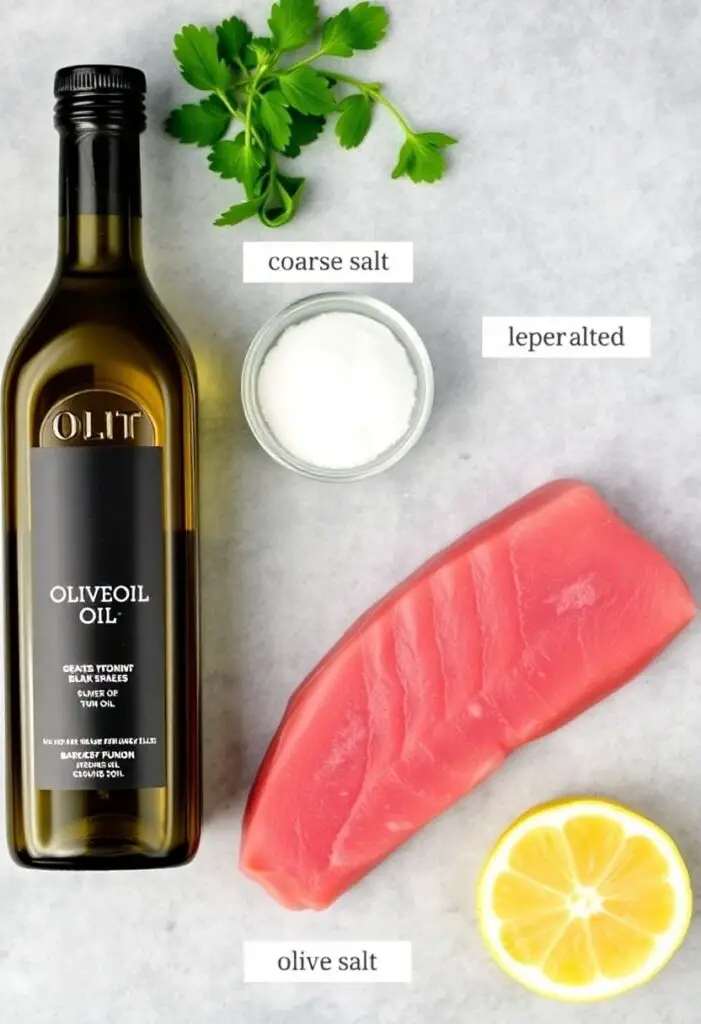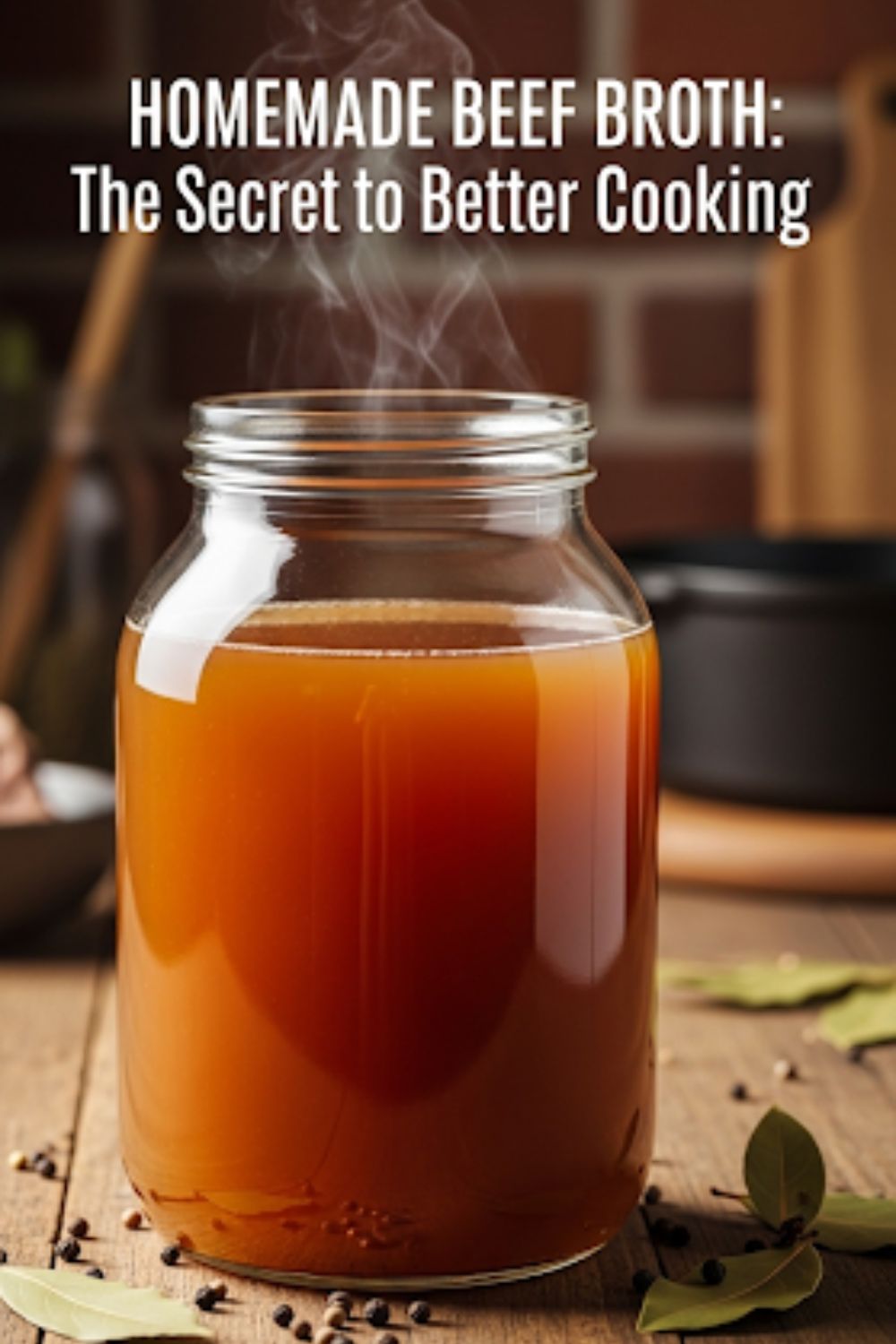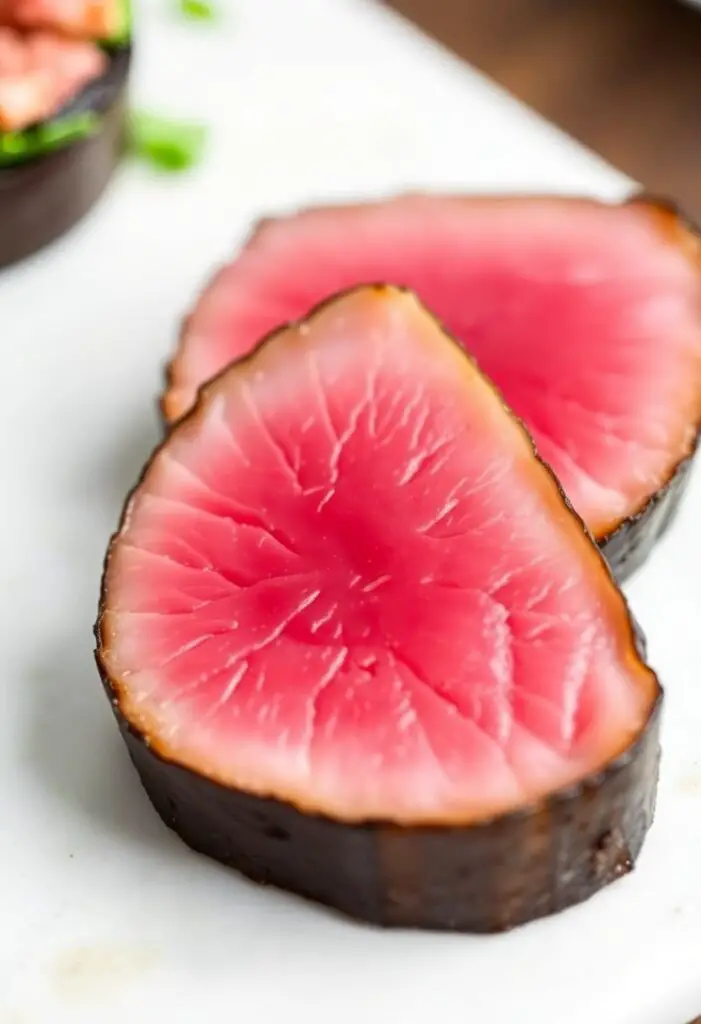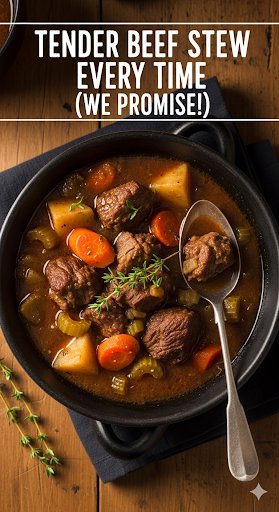How to Cook Tuna Steak (Perfectly Seared, Sushi-Grade Deliciousness!)
Let’s talk about tuna steak. It’s that beautiful, ruby-red cut of fish that looks intimidatingly fancy, usually reserved for swanky restaurants or special occasions. You’ve probably seen it on menus, maybe even ordered it, and thought, “Could I really make this at home without turning it into a hockey puck?” My friend, the answer is a resounding YES. Today, you are going to learn how to cook tuna steak so perfectly, it will have a gorgeous, crispy sear on the outside and a tender, melt-in-your-mouth, rare interior. Get ready to impress yourself (and anyone lucky enough to share your dinner table) with a dish that’s both elegant and surprisingly easy.
Why This Recipe Is Awesome (It’s Your 5-Minute Gourmet Meal)
Why bother with tuna steak? Because it’s a culinary superstar that delivers on all fronts:
- Lightning Fast: We’re talking 5 minutes of actual cooking time. Seriously. It’s faster than boiling pasta. It’s the ultimate quick, healthy weeknight meal.
- Restaurant-Quality Results: This method consistently gives you that coveted seared-rare perfection, just like you’d get at a fancy seafood spot. Who needs a reservation when you have this recipe?
- Healthy & Flavorful: Tuna is packed with lean protein and omega-3s, making it a powerhouse of nutrition. Plus, the flavor is undeniably delicious – clean, meaty, and wonderfully versatile.
- Impress Without Stress: Everyone thinks tuna steak is hard to cook. You’ll know the secret, effortlessly whipping up a meal that looks incredibly sophisticated but takes minimal effort. It’s perfect for a special meal at home in Khulna, a welcome break from the usual!
This isn’t just a recipe; it’s your new go-to for a fast, fancy, and fantastic meal. Get ready to unleash your inner chef!
Ingredients: Your Lean, Mean Flavor Team
We’re keeping it simple to let the tuna shine. Quality tuna is the star here.
- 2 (6-8 ounce) tuna steaks, about 1-inch thick (sushi-grade is best for rare cooking!)
- 1 tablespoon olive oil (or other high smoke point oil like grapeseed or avocado oil)
- ½ teaspoon coarse salt, such as Kosher salt or sea salt
- ¼ teaspoon freshly cracked black pepper
- Optional for serving: Lemon wedges, fresh chopped parsley, sesame seeds, soy sauce, or a drizzle of sriracha mayo.
A Very Important Note on Your Tuna Steak:
- Quality is Key: This is non-negotiable. For a truly delicious, safe-to-eat rare or medium-rare tuna, you need sushi-grade or sashimi-grade tuna. Talk to your fishmonger! If you can’t find sushi-grade, cook it to medium.
- Thickness: Aim for 1-inch thick steaks. Thinner steaks cook too fast and can easily overcook.
Tools & Kitchen Gadgets Used: Your Searing Squad
You don’t need much, but a hot pan is your best friend.
- A Heavy-Bottomed Skillet (A cast iron skillet or a good quality stainless steel pan works best. Non-stick won’t get hot enough for a proper sear.)
- Tongs
- Instant-Read Meat Thermometer (Highly recommended for perfect doneness!)
- Paper Towels
- Cutting Board
- Sharp Knife
Step-by-Step Instructions: The Path to Tuna Perfection
This process moves incredibly fast. Have all your ingredients prepped and ready by the stove before you even think about heating that pan.
Act 1: The Prep (Dry is the Way to Go!)
- Bring to Room Temp (Briefly!): Take your tuna steaks out of the fridge about 10-15 minutes before cooking. You don’t want them stone cold, but unlike beef, you don’t need them fully at room temp.
- Pat It Dry (Crucial Step!): Generously pat both sides of the tuna steaks completely dry with paper towels. Any moisture on the surface will prevent that beautiful sear from forming. This is critical, people!
- Season Generously: Season both sides of the dry tuna steaks with coarse salt and freshly cracked black pepper. Be generous, the seasoning helps form that crust.
Act 2: The Searing (Fast & Furious!)
- Heat the Pan (Smoking Hot!): Place your cast iron skillet (or heavy-bottomed pan) over high heat. Let it heat up for a good 2-3 minutes until it’s smoking lightly. This is essential for getting a quick, hard sear.
- Add the Oil: Drizzle the olive oil into the hot pan. It should shimmer immediately and might smoke a little.
- Sear the First Side (60-90 Seconds): Carefully place the seasoned tuna steaks into the smoking hot pan. Let them cook, undisturbed, for just 60 to 90 seconds. You want a deep, golden-brown crust.
- Flip and Sear Second Side (60-90 Seconds): Using your tongs, flip the tuna steaks. Sear for another 60 to 90 seconds on the second side to create a matching crust.
- Sear the Edges (Optional, but Recommended!): If your tuna steaks are thick enough, use your tongs to briefly sear the thin sides, holding them upright in the pan for about 15-30 seconds per side. This cooks more of the surface and looks super pro.
Act 3: The Rest (Don’t You Dare Cut Yet!)
- Check for Doneness (The Thermometer is Your Friend!): For perfectly seared-rare tuna, the internal temperature should be 115-120°F (46-49°C). For medium-rare, aim for 125-130°F (52-54°C). Remember, it will continue to cook a little after you remove it from the heat.
- REST THE TUNA (Crucial!): Remove the tuna steaks from the pan and place them on a clean cutting board. Let them rest for 5 minutes. This allows the heat to equalize throughout the steak and keeps the juices locked in. Resist the urge to cut into it immediately!
- Slice and Serve: After resting, slice the tuna steak against the grain into ½-inch thick slices. Serve immediately with your favorite garnishes.
Calories & Nutritional Info (Per Serving, Estimated)
Tuna steak is a lean protein powerhouse! (This is for one 6-ounce cooked serving.)
- Estimated Calories per serving: ~200-250 calories
- Protein: ~35-40g (An excellent source!)
- Fat: ~5-8g (Mostly healthy omega-3 fatty acids)
- Carbohydrates: 0g
- Good Stuff: Rich in Vitamin D, B12, selenium, and niacin.
Common Mistakes to Avoid: Don’t Ruin That Pristine Tuna!
Even for such a simple recipe, there are a few traps. Avoid these for perfect results.
- Using Non-Sushi Grade Tuna for Rare Cooking: If your tuna isn’t high quality and labeled “sushi-grade,” cook it to at least medium (135°F/57°C) to be safe. Don’t risk it!
- Not Drying the Tuna: Just like steak, a wet surface prevents a proper sear. Pat it completely dry! This is why your Khulna fishmonger will ask if you want it dry before wrapping!
- Not Heating the Pan Enough: A lukewarm pan means no crust, just sad, gray tuna. Get that pan screaming hot until it’s smoking lightly.
- Overcooking: This is the ultimate tuna sin! Tuna goes from perfectly rare to dry and chalky in a matter of seconds. Watch your timer, and use a thermometer if you’re unsure. Pull it off the heat when it’s slightly under your target temperature.
- Skipping the Rest: While tuna doesn’t need to rest as long as beef, a quick 5-minute rest helps the juices settle, giving you a more tender and juicy result.
Variations & Customizations: Your Tuna, Your Adventure
The beauty of perfectly seared tuna is its versatility!
- Asian-Inspired Tuna: Before searing, crust the tuna with black and white sesame seeds. Serve with a side of soy sauce, pickled ginger, and wasabi.
- Spicy Cajun Seared Tuna: Rub the tuna generously with Cajun seasoning instead of just salt and pepper before searing. Serve with a squeeze of lime.
- Mediterranean Tuna Salad: Once cooked and chilled, flake the tuna and toss it with chopped cucumber, cherry tomatoes, red onion, olives, and a lemon-herb vinaigrette.
FAQ Section: All Your Tuna-Searing Questions, Answered
You have questions about this speedy seafood. I’ve got the answers.
- Q: How do I know if my tuna is sushi-grade? A: It should be explicitly labeled as such by your fishmonger or seafood counter. It will look vibrant red, almost purple, with no brown spots or dullness. Always ask!
- Q: Can I cook tuna steak medium or well-done? A: Yes, you can, but honestly, it’s a bit of a tragedy for such a beautiful fish. If you must, cook it for an extra minute or two per side, aiming for an internal temperature of 135-140°F (57-60°C) for medium.
- Q: My tuna stuck to the pan. What happened? A: Your pan might not have been hot enough, or you might not have used enough oil. A truly hot pan with a good layer of oil helps create that non-stick sear.
- Q: What kind of oil should I use for searing tuna? A: Use an oil with a high smoke point, like olive oil, grapeseed oil, or avocado oil. Butter will burn at the high temperatures needed for searing.
- Q: Should I marinate tuna steak before cooking? A: You can, but keep marinades brief (15-30 minutes) as the acid can start to “cook” the fish. A simple rub or quick dip in a soy-ginger marinade works well, but don’t overdo it.
- Q: How long can cooked tuna steak be stored? A: Store leftover cooked tuna steak in an airtight container in the refrigerator for up to 2-3 days. It’s delicious cold in salads!
- Q: Can I use frozen tuna steaks? A: Yes, but thaw them completely in the fridge overnight or quickly under cold running water. Then, pat them extremely dry before seasoning and searing.
Final Thoughts: You Are Now a Tuna Steak Master
You’ve done it. You have officially unlocked the secret to cooking a perfect, restaurant-quality tuna steak at home. You are now a master of the searing crust, a champion of the rare interior, a true seafood savant. So go forth, pick out that beautiful cut, heat up that pan, and enjoy the incredible satisfaction of a perfectly cooked tuna steak, made by you. Your taste buds (and your inner gourmet) will thank you.



